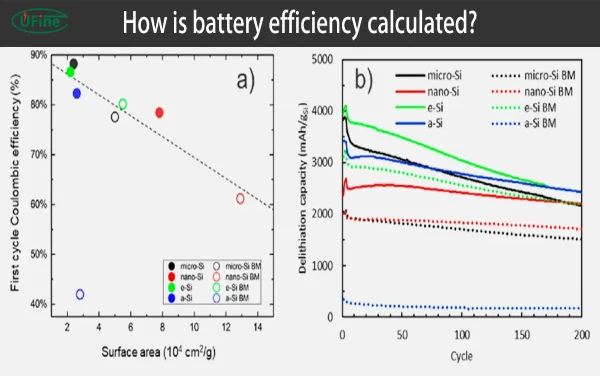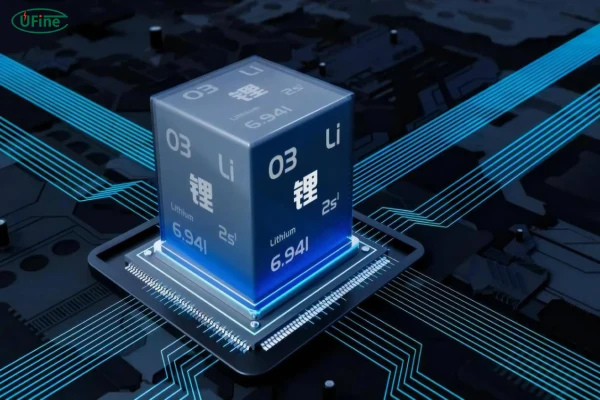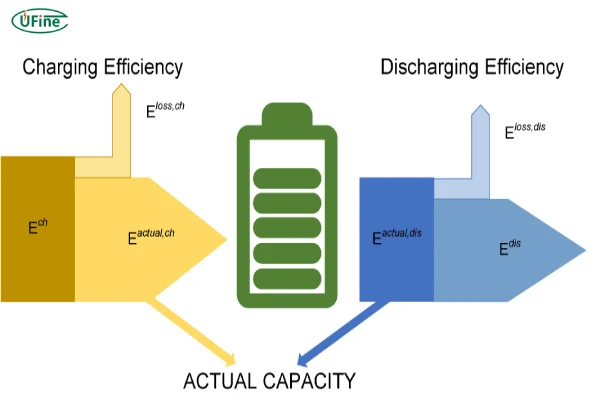In the era of electric vehicles, smartphones, and renewable energy, lithium batteries are the unsung heroes powering our daily lives. Yet, not all the energy put into these batteries translates into usable power. This is where lithium battery efficiency becomes crucial.
Lithium battery efficiency defines how effectively a battery converts the energy used during charging into energy available for discharge. It determines performance, longevity, and even environmental impact. But what exactly influences this efficiency? How can we measure and improve it? Let’s explore these questions in detail.
Part 1. What is lithium battery efficiency?

Lithium battery efficiency refers to the ratio of energy retrieved during discharge to the energy put in during charging. It indicates how much energy is “lost” in the process, usually due to heat and chemical reactions.
Types of Efficiency
-
Energy Efficiency
This measures how well the battery stores energy for later use. A higher energy efficiency means less energy is wasted. -
Coulombic Efficiency
This measures the charge retained after a full cycle. Most lithium-ion batteries boast a Coulombic efficiency close to 99%, making them reliable for long-term use. -
Thermal Efficiency
This gauges energy lost as heat during charge and discharge cycles. Batteries with poor thermal efficiency not only waste energy but may also overheat, causing safety concerns.
Part 2. What affects lithium battery efficiency?
Efficiency isn’t a fixed metric—it varies based on several factors. Some are inherent to the battery’s design, while others depend on how it’s used.
1. Battery Chemistry
Different lithium-based chemistries have unique efficiency levels:
- Lithium Iron Phosphate (LiFePO4) batteries are highly efficient and thermally stable.
- Lithium Nickel Manganese Cobalt Oxide (NMC) batteries offer high energy density but slightly lower efficiency.
2. Temperature
Extreme temperatures wreak havoc on efficiency:
- High temperatures cause unwanted chemical reactions, reducing energy retention.
- Low temperatures slow down electrochemical processes, limiting power output.
Battery Charging and Discharging at Extreme Temperatures
3. Charging efficiency
Charging efficiency is mainly affected by battery technology, formulation and the working environment temperature of the battery. During the charging process, electrical energy needs to be effectively converted into chemical energy and stored in the battery. Any factors that hinder this process, such as inappropriate electrolyte formulation, poor electrode structure or inappropriate working temperature, may lead to reduced charging efficiency.
4. Discharge efficiency
Discharge efficiency refers to the ratio of the actual amount of electricity discharged to the terminal voltage under certain discharge conditions to the rated capacity of the battery.
This efficiency is affected by factors such as discharge rate, ambient temperature and internal resistance. High discharge rate, low temperature or high internal resistance may limit the battery’s ability to discharge, thereby reducing discharge efficiency.
5. Depth of Discharge (DoD)
Frequent deep discharges, where the battery is almost fully depleted, reduce efficiency over time.
6. Aging and Cycles
As batteries age, internal resistance increases. This leads to more energy being wasted as heat, lowering efficiency.
7. Side reactions
During the battery charging and discharging process, the occurrence of side reactions will consume part of the electrical energy and reduce the battery’s energy conversion efficiency. For example, side reactions such as electrolyte decomposition and active material dissolution will lead to a decrease in battery performance.
8. Manufacturing Quality
Batteries made with subpar materials or improper assembly may show reduced efficiency right from the start.
Each of these factors plays a critical role in the battery’s overall performance, making it essential to consider them during design, usage, and maintenance.
Part 3. Typical battery efficiency
Lithium batteries come in many types, each with varying efficiency levels. Here’s a closer look at the most common ones:
1. Lithium-Ion (Li-ion) Batteries
- Energy Efficiency: 90–95%
- Uses: Smartphones, laptops, EVs
- Key Features: High efficiency, good energy density, but sensitive to temperature.
2. Lithium Iron Phosphate (LiFePO4)
- Energy Efficiency: 95–98%
- Uses: Solar systems, electric buses
- Key Features: Excellent thermal stability and long cycle life.
3. Lithium-Titanate (LTO) Batteries
- Energy Efficiency: 85–90%
- Uses: Fast-charging applications
- Key Features: Lower energy density but exceptional safety and lifespan.
4. Lead-Acid Batteries
- Energy Efficiency: 70–85%
- Uses: Cars, backup systems
- Key Features: Inexpensive but low efficiency and heavy.
5. Nickel-Metal Hydride (NiMH)
- Energy Efficiency: 70–80%
- Uses: Hybrid vehicles, household devices
- Key Features: Higher efficiency than older nickel-based batteries but still less efficient than lithium-based ones.
Among these, lithium-ion and lithium iron phosphate batteries are the most efficient, making them the preferred choice for modern applications.
Part 4. How to calculate lithium battery efficiency?
Measuring lithium battery efficiency is straightforward with the right data. Here’s how:
Formula for Energy Efficiency
Energy Efficiency (%)=(Energy Output/Energy Input)×100
For example:
- Energy input: 120Wh
- Energy output: 108Wh
Efficiency = (108/120)×100=90%
Formula for Coulombic Efficiency
Coulombic Efficiency (%)=(Charge Input/Charge Output)×100
If a battery retains 99 units of charge for every 100 units input, its Coulombic efficiency is 99%.
Tools for Measurement
- Battery Management Systems (BMS): Many batteries come equipped with a BMS to monitor efficiency in real time.
- External Devices: Multimeters and specialized battery testers can help measure input/output energy.
Part 5. How to improve lithium battery efficiency?
Improving lithium battery efficiency requires a combination of proper usage, maintenance, and technology. Here’s how you can enhance performance:
1. Charge Wisely
- Use chargers designed specifically for your battery type.
- Avoid overcharging by disconnecting once fully charged.
- Stick to partial charging cycles (e.g., 20–80%).
The ambient temperature has a great influence on the efficiency of lithium-ion batteries. Too high or too low temperature will reduce the battery performance. Therefore, controlling the operating temperature within an appropriate range is an important measure to improve the efficiency of lithium-ion batteries.
By adopting advanced thermal management systems or optimizing battery structure to improve heat dissipation conditions, the battery can be kept running at the optimal operating temperature, thereby improving its efficiency and stability.
3. Optimize Charging and Discharging Rates
- Avoid rapid charging unless absolutely necessary.
- Use devices that match the battery’s recommended discharge rate.
Choosing the right electrode material is the key to improving the efficiency of lithium-ion batteries.
At present, researchers are studying new electrode materials with high energy density, long life and excellent electrochemical properties, such as silicon-based materials, lithium titanate, etc. These new materials can improve the conductivity of the electrode, reduce the internal resistance, and thus improve the charging and discharging efficiency.
5. Improvement of electrolyte transport performance
The electrolyte plays the role of transporting ions in lithium-ion batteries. By optimizing the composition and properties of the electrolyte, its wettability in the electrode can be improved, the ion transport rate can be increased, and the charging and discharging efficiency of the battery can be improved.
In addition, the use of new solid electrolytes can achieve rapid lithium ion transmission and further enhance battery performance.
6. Side reaction inhibition
For the problem of side reactions, the occurrence of side reactions can be reduced by improving the battery manufacturing process and optimizing the electrolyte formula. For example, by controlling the temperature and humidity during the electrode preparation process, adding additives to inhibit the decomposition of the electrolyte, and other measures, the occurrence of side reactions can be effectively reduced, thereby improving the energy efficiency and stability of the battery.
7. Integration and modular design
Integration is to combine multiple single cells into a module or system to improve overall efficiency and stability.
Modularization is to combine multiple modules into a complete battery system. By optimizing integration and modular design, the internal resistance can be reduced, the energy density and safety can be increased, thereby improving the overall performance of lithium-ion batteries.
8. Extended cycle life
Cycle life is one of the important indicators to measure the performance of lithium-ion batteries. By improving the technology of electrode materials, electrolytes and management systems, the service life of lithium-ion batteries can be extended. This helps to reduce maintenance costs and improve economic benefits, further promoting the application and development of lithium-ion batteries.
9. BMS
BMS can monitor, diagnose and optimize the battery in real time, so as to achieve efficient use of the battery.
Through advanced algorithms and sensor technology, the intelligent management system can predict the performance and life of the battery, intelligently adjust the charging and discharging mode according to the usage, and improve the safety and efficiency of the battery.
10. Regular Maintenance
- Clean battery terminals to reduce resistance.
- Test the battery periodically for efficiency and capacity.
Part 6. Conclusion
Lithium battery efficiency is a critical metric for assessing performance, energy use, and sustainability. From understanding its definition to exploring influencing factors and practical tips for improvement, efficiency is a concept every user should understand.
By charging wisely, avoiding extreme conditions, and investing in quality systems, you can maximize your battery’s potential. As technology evolves, lithium batteries will continue to power our future—but their efficiency depends on how well we manage them today.
Related Tags:
More Articles

How to Choose the Best Floor Scrubber Battery for Commercial Cleaning?
Selecting the ideal floor scrubber battery ensures a long runtime, rapid charging, and minimal maintenance for efficient commercial cleaning operations.
Battery for Blower vs Battery for Leaf Vacuum: Which One Should You Choose?
Battery for blower vs leaf vacuum—learn the key differences in power, fit, and runtime to choose the right battery for your outdoor tool needs.
How to Choose the Right Battery for Blower?
Choosing the right blower battery? Consider voltage, capacity, chemistry & usage. This guide helps match the best battery for peak performance.
How to Choose the Best Insulated Battery Box for Lithium Batteries?
Choosing the Best Insulated Battery Box for Lithium Batteries? Discover key factors such as size, material, and safety for optimal protection and performance.
7 Critical Elements on a Lithium Battery Shipping Label
What must be on a lithium battery shipping label? Learn 7 key elements to ensure safety, legal compliance, and correct handling across all transport modes.





